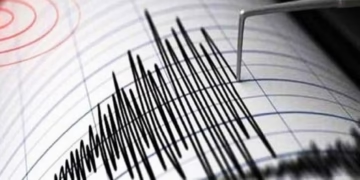Key Highlights
- Friday morning’s earthquake was the strongest in the country in recent memory.
- The movement of the Indian-Eurasian plate to the north of Bangladesh and the Burmese-Indian plate to the east is gradually moving the land.
- The energy ‘locked’ at the plate boundary has now started ‘unlocking’ – frequent small tremors are a sign of a larger earthquake.
- According to experts, the energy stored in the earth’s crust is enough to cause an earthquake of magnitude 8.2 to 9.
- Several catastrophic earthquakes have struck Bangladesh and its surroundings in the last 300 years.
- Notable earthquakes: 1762 (magnitude 8.5), 1869 (7.5), 1885 (7), 1897 (8.7), 1918 (7.6).
- Bangladesh is not earthquake-prone, but it is very high in terms of risk.
- Earthquakes in subduction zones are usually very dangerous.
- Infrastructure cannot be changed quickly; Therefore, regular practice and awareness are most important.
The earthquake felt on Friday morning was the strongest in the country in recent times. Seismologists say that Bangladesh is located at the junction of the Indian plate and the Eurasian plate to the north and the Burmese plate and the Indian plate to the east. Due to the constant movement of these dynamic tectonic plates, the Bangladeshi territory is slowly moving.
‘Unlocking’ of huge energy hints
Earthquake expert and former Vice Chancellor of Bangladesh Open University Dr. Syed Humayun Akhtar said that the energy hidden for a long time in the plate boundary has now started ‘unlocking’. Frequent small-scale tremors indicate that there is a huge amount of energy stored under the earth’s crust to create a large earthquake of magnitude 8.2 to 9 and this energy can be released at any time.
Since there has not been a major earthquake so close to Dhaka in the past few decades, several generations have not seen its horror. However, history says otherwise.
Catastrophic earthquakes in history
1762 earthquake (magnitude 8.5)
This earthquake occurred on a fault line about 400 kilometers long from Teknaf to Myanmar. This raised St. Martin’s Island by about three meters. Huge waves were created in the Bay of Bengal and the course of the Brahmaputra River also changed.
1869 Cachar earthquake (magnitude 7.5)
The origin of this earthquake was in Silchar, very close to Sylhet. It caused many structures to collapse in the Silchar, Nowgang and Imphal regions.
Read More: Government Launches Emergency Measures Following Recent Earthquake
1885 Saturia earthquake (magnitude 7)
This earthquake, which originated in Saturia in Manikganj, was felt from Sikkim to Myanmar in India.
1897 Great Indian Earthquake (magnitude 8.7)
This earthquake, which originated in the Shillong region of Meghalaya, killed more than 1,500 people. Of these, more than 500 people died in Sylhet alone. The course of the Surma and Brahmaputra rivers was also affected.
1918 earthquake (magnitude 7.6)
This tremor, which originated in the sand dunes of Srimangal, caused extensive damage in Srimangal and Tripura, India.
Why is Bangladesh at risk?
According to experts, Bangladesh is at a very high risk level, although it is less earthquake-prone. If the amount of energy stored at the junction of the Indian-Burma plate is released, a very large earthquake can occur—which could happen tomorrow, or even 50 years later.
Earthquakes in subduction zones are usually terrible and very destructive.
Preparation: The only way is to practice
It is not possible to change the country’s infrastructure overnight. Therefore, experts say that the only effective way now is to practice and train. It is important to acquire the ability to move to a safe place within a few steps during an earthquake. Regular practice can play an important role in reducing fatalities.
Source: News 24















